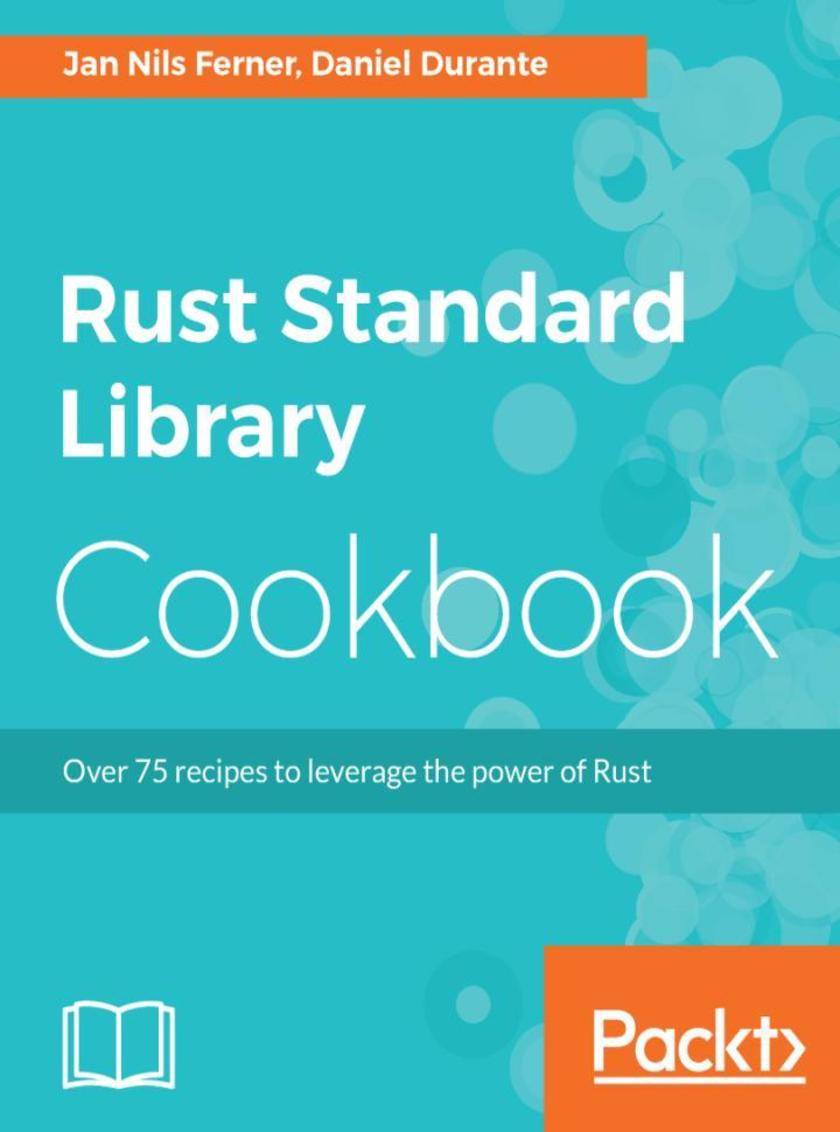
Rust Standard Library Cookbook
¥81.74
Explore the Rust Standard library and compose algorithms with minimal dependency on external libraries About This Book ? Develop high-quality, fast, and portable applications by leveraging the power of Rust's Standard library. ? Practical recipes that will help you work with the Standard library to boost your productivity as a Rust developer. ? Learn about most relevant external crates to be used along with the Standard library. Who This Book Is For This book is for developers who would like to explore the power of Rust and learn to use the STL for various functionalities. A basic Rust programming knowledge is assumed. What You Will Learn ? How to use the basic modules of the library: strings, command line access, and more. ? Implement collections and folding of collections using vectors, Deque, linked lists, and more. ? Handle various file types , compressing and decompressing data. ? Search for files with glob patterns. ? Implement parsing through various formats such as CSV, TOML, and JSON. ? Utilize drop trait , the Rust version of destructor. ? Resource locking with Bilocks. In Detail Mozilla’s Rust is gaining much attention with amazing features and a powerful library. This book will take you through varied recipes to teach you how to leverage the Standard library to implement efficient solutions. The book begins with a brief look at the basic modules of the Standard library and collections. From here, the recipes will cover packages that support file/directory handling and interaction through parsing. You will learn about packages related to advanced data structures, error handling, and networking. You will also learn to work with futures and experimental nightly features. The book also covers the most relevant external crates in Rust. By the end of the book, you will be proficient at using the Rust Standard library. Style and approach This recipe-based practical guide presents each topic with step-by-step instructions on how you can create fast and efficient applications utilizing Rust's Standard library packages.
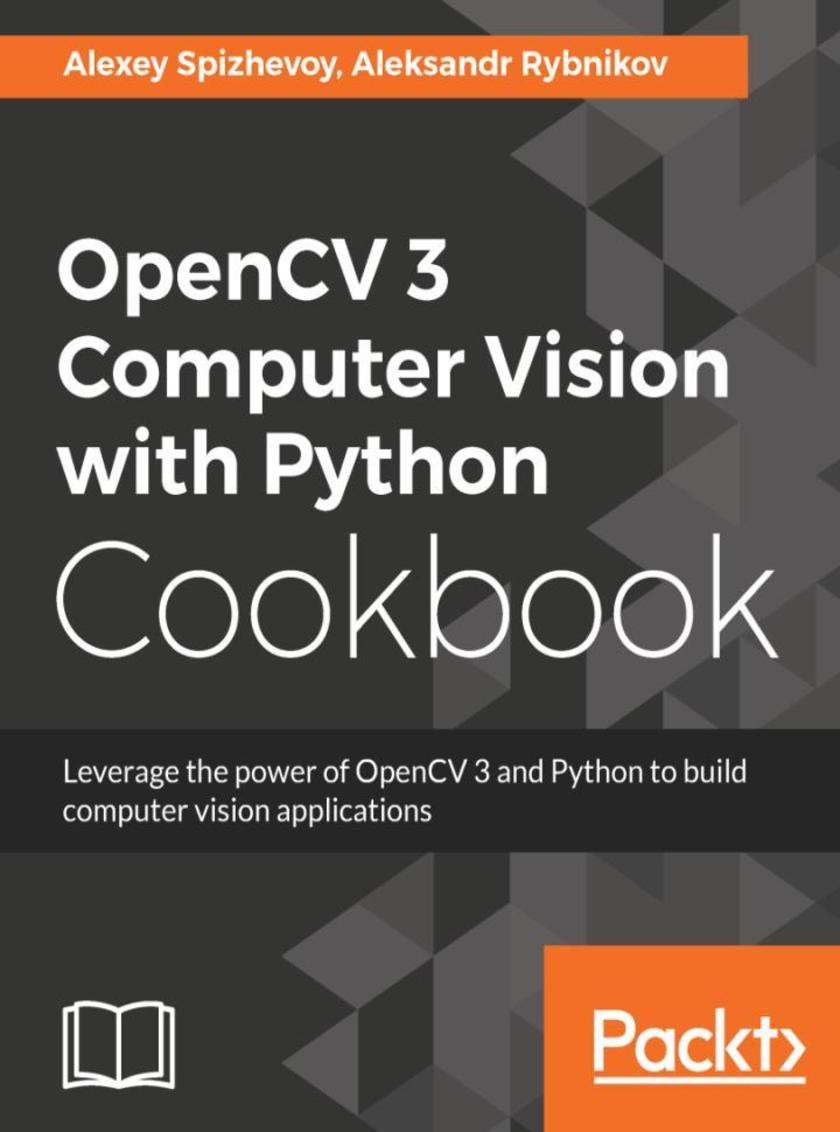
OpenCV 3 Computer Vision with Python Cookbook
¥81.74
Recipe-based approach to tackle the most common problems in Computer Vision by leveraging the functionality of OpenCV using Python APIs About This Book ? Build computer vision applications with OpenCV functionality via Python API ? Get to grips with image processing, multiple view geometry, and machine learning ? Learn to use deep learning models for image classification, object detection, and face recognition Who This Book Is For This book is for developers who have a basic knowledge of Python. If you are aware of the basics of OpenCV and are ready to build computer vision systems that are smarter, faster, more complex, and more practical than the competition, then this book is for you. What You Will Learn ? Get familiar with low-level image processing methods ? See the common linear algebra tools needed in computer vision ? Work with different camera models and epipolar geometry ? Find out how to detect interesting points in images and compare them ? Binarize images and mask out regions of interest ? Detect objects and track them in videos In Detail OpenCV 3 is a native cross-platform library for computer vision, machine learning, and image processing. OpenCV's convenient high-level APIs hide very powerful internals designed for computational efficiency that can take advantage of multicore and GPU processing. This book will help you tackle increasingly challenging computer vision problems by providing a number of recipes that you can use to improve your applications. In this book, you will learn how to process an image by manipulating pixels and analyze an image using histograms. Then, we'll show you how to apply image filters to enhance image content and exploit the image geometry in order to relay different views of a pictured scene. We’ll explore techniques to achieve camera calibration and perform a multiple-view analysis. Later, you’ll work on reconstructing a 3D scene from images, converting low-level pixel information to high-level concepts for applications such as object detection and recognition. You’ll also discover how to process video from files or cameras and how to detect and track moving objects. Finally, you'll get acquainted with recent approaches in deep learning and neural networks. By the end of the book, you’ll be able to apply your skills in OpenCV to create computer vision applications in various domains. Style and approach This book helps you learn the core concepts of OpenCV faster by taking a recipe-based approach where you can try out different code snippets to understand a concept.
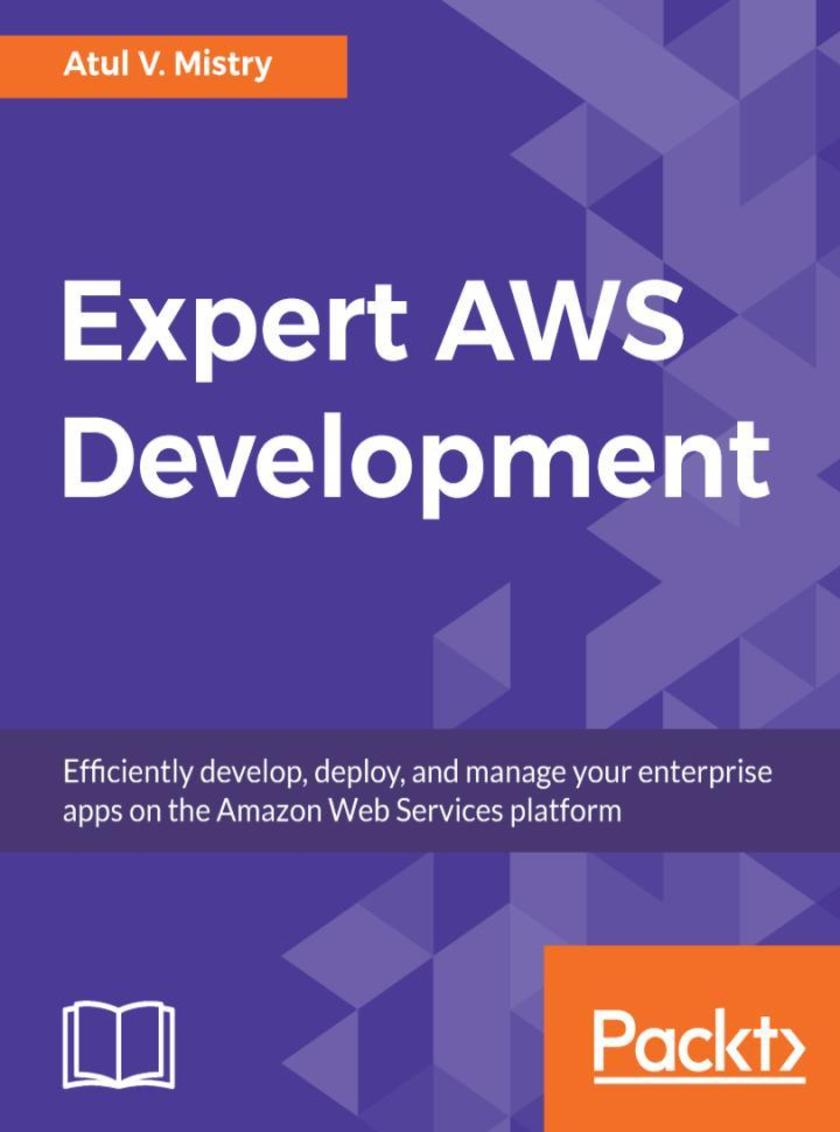
Expert AWS Development
¥81.74
Key concepts, sample applications, best practices, and troubleshooting tips to build highly scalable applications in AWS. About This Book ? Design highly available, cost efficient, fault tolerant, and scalable distributed systems ? A practical guide that will help you build, deploy, and manage applications with ease. ? Develop effective solutions with AWS SDK and Lambda Who This Book Is For This book targets developers who would like to build and manage web and mobile applications and services on the AWS platform. If you are an architect you will be able to take a deep dive and use examples that can be readily applied to real world scenarios. Some prior programming experience is assumed along with familiarity of cloud computing. What You Will Learn ? Learn how to get up and running with AWS Developer Tools. ? Integrate the four major phases in the Release Processes. Source, Build, Test and Production. ? Learn how to integrate Continuous Integration, Continuous Delivery, and Continuous Deployment in AWS. ? Make secure, scalable and fault tolerant applications. ? Understand different architectures and deploy complex architectures within minutes In Detail Continuous deployment and Agile methodology have enabled huge advances in modern applications. This book will enable the reader to make use of this rapidly evolving technology to build highly scalable applications within AWS using different architectures. You will begin with installation of AWS SDK and you will get hands-on experience on creating an application using AWS Management Console and AWS Command Line Interface (CLI). Next you will be integrating Applications with AWS services such as DynamoDB, Amazon Kinesis, AWS Lambda, Amazon SQS and Amazon SWF Following this you will get well versed with CI/CD workflow and work with four major phases in Release processes – Source, Build, Test and Production. Next you will learn to apply AWS developer tools in your Continuous Integration (CI) and Continuous Deployment (CD) WorkFlow. Later you will learn about User Authentication using Amazon Cognito and also how you can evaluate the best architecture as per your infrastructure costs. You will learn about Amazon EC2 service and deploy an app using Amazon EC2.You will also get well versed with container service which is Amazon EC2 Container Service (Amazon ECS) and you will learn to deploy an app using Amazon ECS. Along with EC2 and ECS, you will also deploying a practical real-world example of a CI/CD application with the Serverless Application Framework which is known as AWS Lambda. Finally you will learn how to build, develop and deploy the Application using AWS Developer tools like AWS CodeCommit, AWS CodeBuild, AWS CodeDeploy and AWS CodePipeline as per project needs. Also you can develop and deploy applications within minutes using AWS CodeStar from wizard. By the end of this book, the reader will effectively build, deploy, and manage applications on AWS along with scaling and securing applications with best practices and troubleshooting tips. Style and approach This book covers follows an approach where you will learn the key concepts followed by a real world example and some tips and tricks to make building and deploying easier
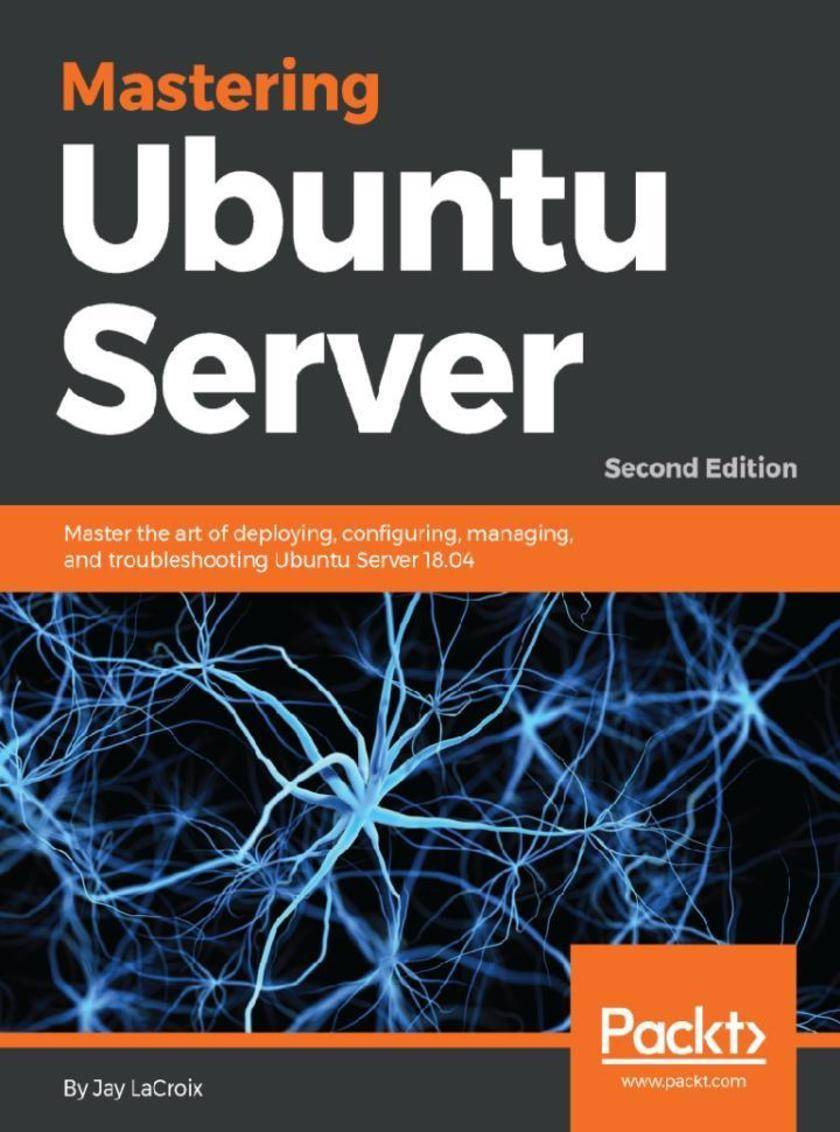
Mastering Ubuntu Server
¥81.74
Get up-to-date with the finer points of Ubuntu Server using this comprehensive guide About This Book ? A practical easy-to-understand book that will teach you how to deploy, maintain and troubleshoot Ubuntu Server ? Get well-versed with newly-added features in Ubuntu 18.04. ? Learn to manage cutting-edge technologies such as virtualization, containers, Nextcloud and more Who This Book Is For This book is intended for readers with intermediate or advanced-beginner skills with Linux, who would like to learn all about setting up servers with Ubuntu Server. This book assumes that the reader knows the basics of Linux, such as editing configuration files and running basic commands. What You Will Learn ? Manage users, groups, and permissions ? Encrypt and decrypt disks with Linux Unified Key Setup (LUKS) ? Set up SSH for remote access, and connect it to other nodes ? Add, remove, and search for packages ? Use NFS and Samba to share directories with other users ? Get to know techniques for managing Apache and MariaDB ? Explore best practices and troubleshooting techniques ? Get familiar with scripting ? Automate server deployments with Ansible In Detail Ubuntu Server has taken the data centers by storm. Whether you're deploying Ubuntu for a large-scale project or for a small office, it is a stable, customizable, and powerful Linux distribution that leads the way with innovative and cutting-edge features. For both simple and complex server deployments, Ubuntu's flexible nature can be easily adapted to meet to the needs of your organization. With this book as your guide, you will learn all about Ubuntu Server, from initial deployment to creating production-ready resources for your network. The book begins with the concept of user management, group management, and filesystem permissions. Continuing into managing storage volumes, you will learn how to format storage devices, utilize logical volume management, and monitor disk usage. Later, you will learn how to virtualize hosts and applications, which will cover setting up KVM/QEMU, as well as containerization with both Docker and LXD. As the book continues, you will learn how to automate configuration with Ansible, as well as take a look at writing scripts. Lastly, you will explore best practices and troubleshooting techniques when working with Ubuntu Server that are applicable to real-world scenarios. By the end of the book, you will be an expert Ubuntu Server administrator who is well-versed in its advanced concepts. Style and approach This book is an advanced guide that will show readers how to administer, manage, and deploy Ubuntu server and will also provide expert-level knowledge on advanced security and backup techniques.
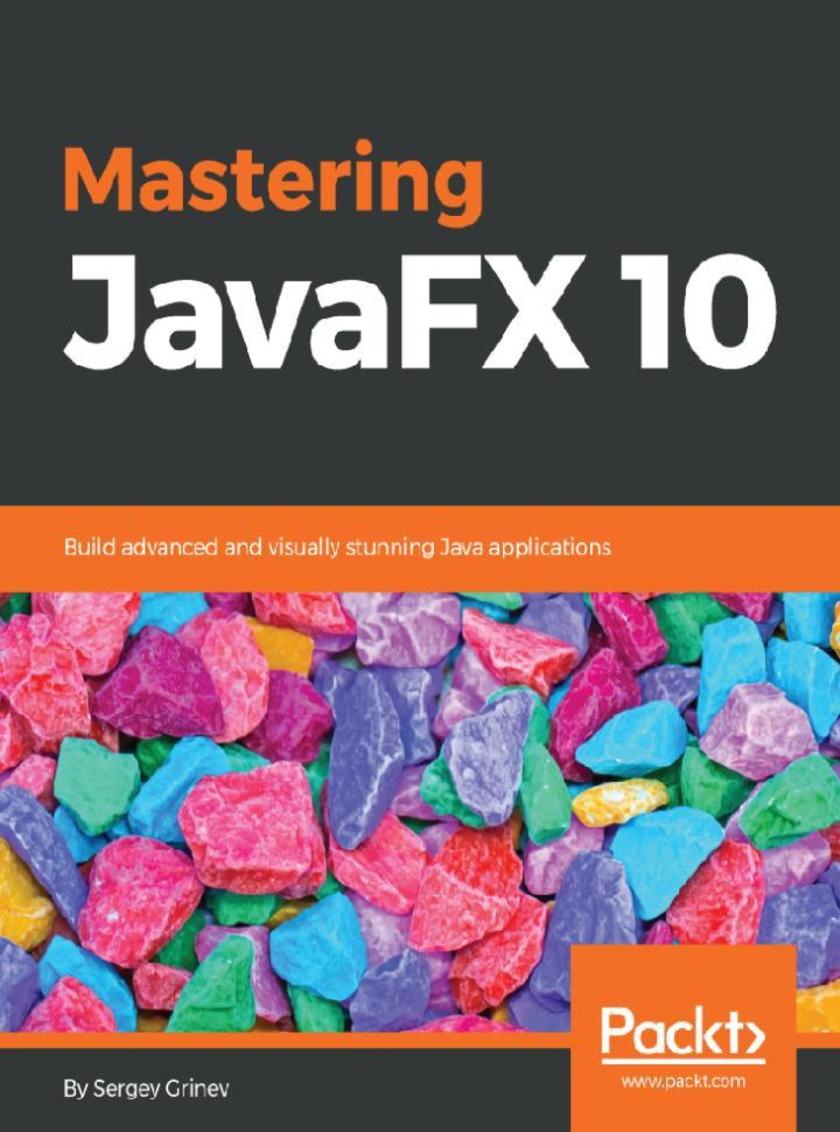
Mastering JavaFX 10
¥81.74
Design modern, rich interfaces for Java apps using JavaFX 10 About This Book ? Become a pro with the latest JavaFX 10 framework ? Create dynamic content using the animation API ? Create and customize plugins and use them efficiently in different applications Who This Book Is For If you’re a Java developer who wants to upgrade to the latest version of JavaFX to create stunning, feature-rich graphical applications, this book is for you. What You Will Learn ? Construct and customize JavaFX windows ? Manage UI elements and arrange them on the Scene ? Explore the Bindings API and use it to coordinate various UI elements ? Use FXML to design amazing FX applications ? Write and manage CSS to style your applications ? Add audio and video to your projects ? Prepare your application to be launched on the target platform In Detail JavaFX 10 is used to create media-rich client applications. This book takes you on a journey to use JavaFX 10 to build applications that display information in a high-performance, modern user interface featuring audio, video, graphics, and animation. Mastering JavaFX 10 begins by introducing you to the JavaFX API. You will understand the steps involved in setting up your development environment and build the necessary dependencies. This is followed by exploring how to work with the assets, modules, and APIs of JavaFX. This book is filled with practical examples to guide you through the major features of JavaFX 10. In addition to this, you will acquire a practical understanding of JavaFX custom animations, merging different application layers smoothly, and creating a user-friendly GUI with ease. By the end of the book, you will be able to create a complete, feature-rich Java graphical application using JavaFX. Style and approach The book adopts a practical, step-by-step approach.
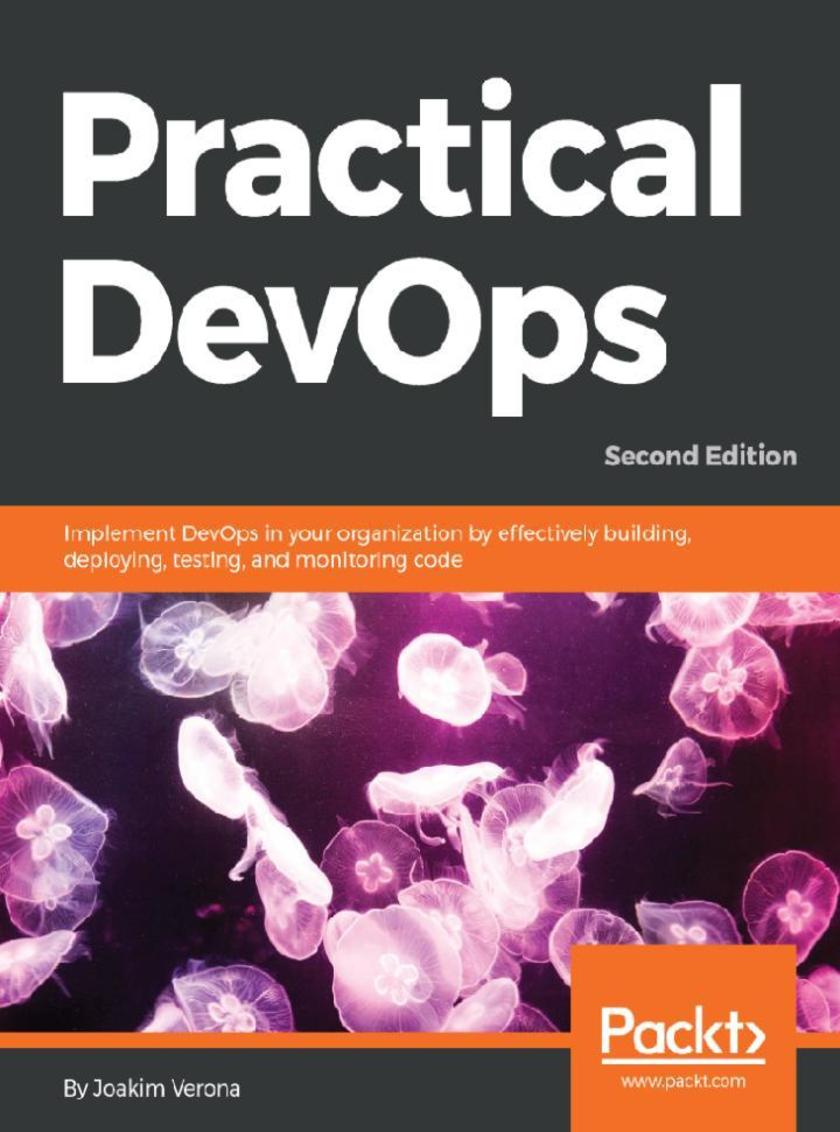
Practical DevOps
¥81.74
Understand the benefits of DevOps and continuous delivery and see how they support the agile software development process About This Book ? Learn how DevOps can accelerate your entire software development life cycle ? Improve your organization's performance to ensure the smooth production of software and services ? Get hands-on experience in using efficient DevOps tools to better effect Who This Book Is For If you're a developer or system administrator looking to take on larger responsibilities and understand how the infrastructure that builds today's enterprises works, this is the book for you. This book will also help you greatly if you're an operations worker who would like to better support developers. You do not need any previous knowledge of DevOps to understand the concepts in this book. What You Will Learn ? Understand how all deployment systems fit together to form a larger system ? Set up and familiarize yourself with all the tools you need to be efficient with DevOps ? Design an application suitable for continuous deployment systems with DevOps in mind ? Store and manage your code effectively using Git, Gerrit, Gitlab, and more ? Configure a job to build a sample CRUD application ? Test your code using automated regression testing with Jenkins Selenium ? Deploy your code using tools such as Puppet, Ansible, Palletops, Chef, and Vagrant In Detail DevOps is a practical field that focuses on delivering business value as efficiently as possible. DevOps encompasses all code workflows from testing environments to production environments. It stresses cooperation between different roles, and how they can work together more closely, as the roots of the word imply—Development and Operations. Practical DevOps begins with a quick refresher on DevOps and continuous delivery and quickly moves on to show you how DevOps affects software architectures. You'll create a sample enterprise Java application that you’'ll continue to work with through the remaining chapters. Following this, you will explore various code storage and build server options. You will then learn how to test your code with a few tools and deploy your test successfully. In addition to this, you will also see how to monitor code for any anomalies and make sure that it runs as expected. Finally, you will discover how to handle logs and keep track of the issues that affect different processes. By the end of the book, you will be familiar with all the tools needed to deploy, integrate, and deliver efficiently with DevOps. Style and approach This book is primarily a technical guide to DevOps with practical examples suitable for people who like to learn by implementing concrete working code.
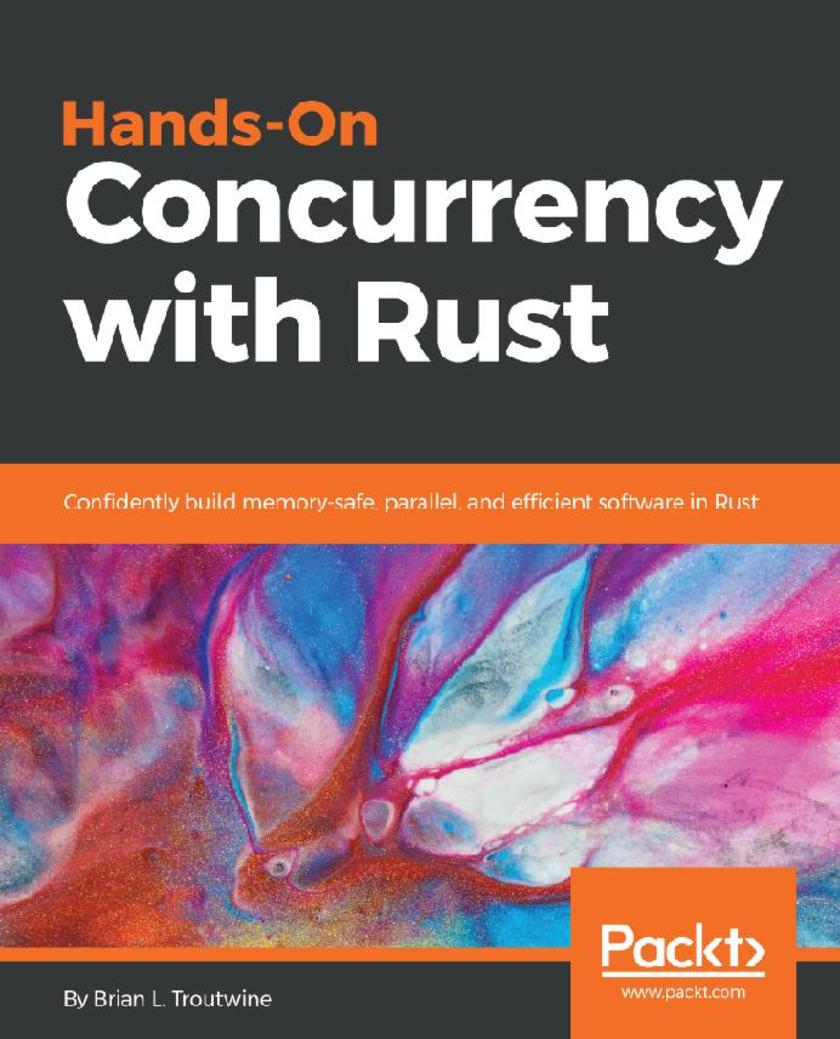
Hands-On Concurrency with Rust
¥81.74
Get to grips with modern software demands by learning the effective uses of Rust's powerful memory safety. About This Book ? Learn and improve the sequential performance characteristics of your software ? Understand the use of operating system processes in a high-scale concurrent system ? Learn of the various coordination methods available in the Standard library Who This Book Is For This book is aimed at software engineers with a basic understanding of Rust who want to exploit the parallel and concurrent nature of modern computing environments, safely. What You Will Learn ? Probe your programs for performance and accuracy issues ? Create your own threading and multi-processing environment in Rust ? Use coarse locks from Rust’s Standard library ? Solve common synchronization problems or avoid synchronization using atomic programming ? Build lock-free/wait-free structures in Rust and understand their implementations in the crates ecosystem ? Leverage Rust’s memory model and type system to build safety properties into your parallel programs ? Understand the new features of the Rust programming language to ease the writing of parallel programs In Detail Most programming languages can really complicate things, especially with regard to unsafe memory access. The burden on you, the programmer, lies across two domains: understanding the modern machine and your language's pain-points. This book will teach you to how to manage program performance on modern machines and build fast, memory-safe, and concurrent software in Rust. It starts with the fundamentals of Rust and discusses machine architecture concepts. You will be taken through ways to measure and improve the performance of Rust code systematically and how to write collections with confidence. You will learn about the Sync and Send traits applied to threads, and coordinate thread execution with locks, atomic primitives, data-parallelism, and more. The book will show you how to efficiently embed Rust in C++ code and explore the functionalities of various crates for multithreaded applications. It explores implementations in depth. You will know how a mutex works and build several yourself. You will master radically different approaches that exist in the ecosystem for structuring and managing high-scale systems. By the end of the book, you will feel comfortable with designing safe, consistent, parallel, and high-performance applications in Rust. Style and approach Readers will be taken through various ways to improve the performance of their Rust code.
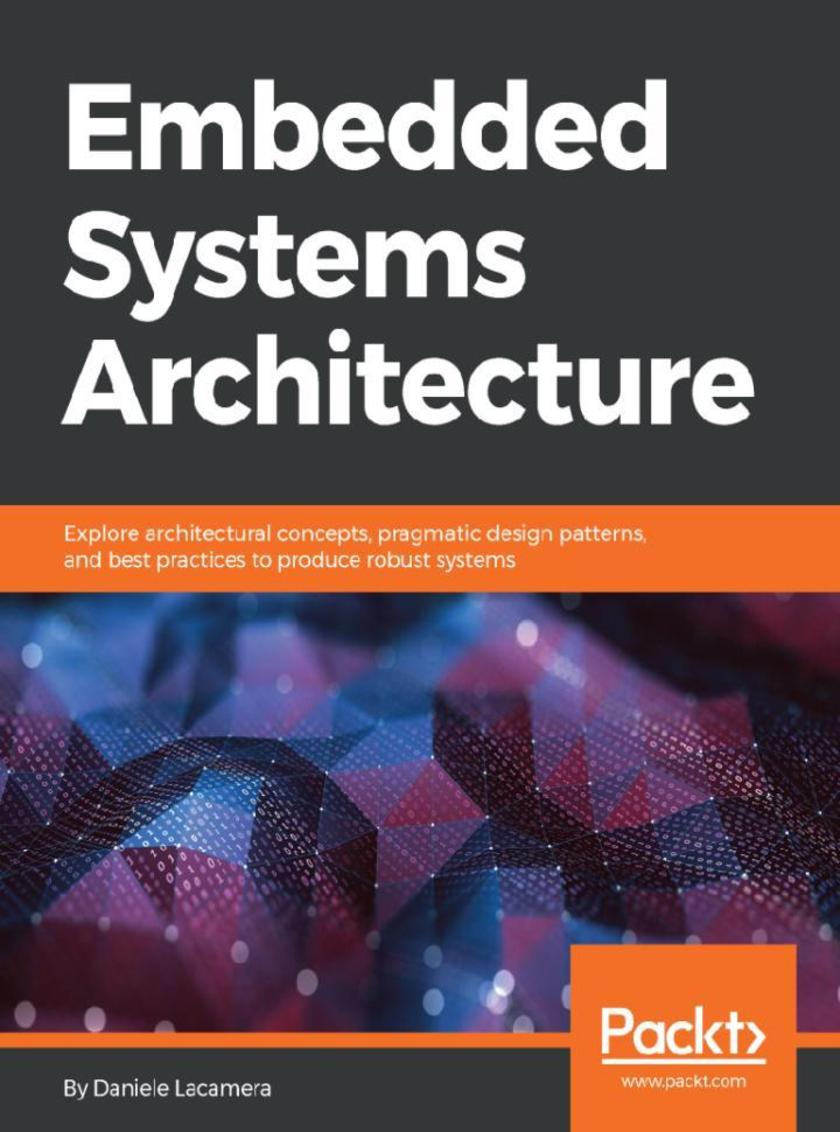
Embedded Systems Architecture
¥81.74
Learn to design and develop safe and reliable embedded systems About This Book ? Identify and overcome challenges in embedded environments ? Understand the steps required to increase the security of IoT solutions ? Build safety-critical and memory-safe parallel and distributed embedded systems Who This Book Is For If you’re a software developer or designer wanting to learn about embedded programming, this is the book for you. You’ll also find this book useful if you’re a less experienced embedded programmer willing to expand your knowledge. What You Will Learn ? Participate in the design and definition phase of an embedded product ? Get to grips with writing code for ARM Cortex-M microcontrollers ? Build an embedded development lab and optimize the workflow ? Write memory-safe code ? Understand the architecture behind the communication interfaces ? Understand the design and development patterns for connected and distributed devices in the IoT ? Master multitask parallel execution patterns and real-time operating systems In Detail Embedded systems are self-contained devices with a dedicated purpose. We come across a variety of fields of applications for embedded systems in industries such as automotive, telecommunications, healthcare and consumer electronics, just to name a few. Embedded Systems Architecture begins with a bird's eye view of embedded development and how it differs from the other systems that you may be familiar with. You will first be guided to set up an optimal development environment, then move on to software tools and methodologies to improve the work flow. You will explore the boot-up mechanisms and the memory management strategies typical of a real-time embedded system. Through the analysis of the programming interface of the reference microcontroller, you'll look at the implementation of the features and the device drivers. Next, you'll learn about the techniques used to reduce power consumption. Then you will be introduced to the technologies, protocols and security aspects related to integrating the system into IoT solutions. By the end of the book, you will have explored various aspects of embedded architecture, including task synchronization in a multi-threading environment, and the safety models adopted by modern real-time operating systems. Style and approach Software developers and designers with experience in different fields, and who want to learn about embedded programming, will benefit from this book. Junior and less experienced embedded programmers willing to expand their knowledge in the field will also find it useful.
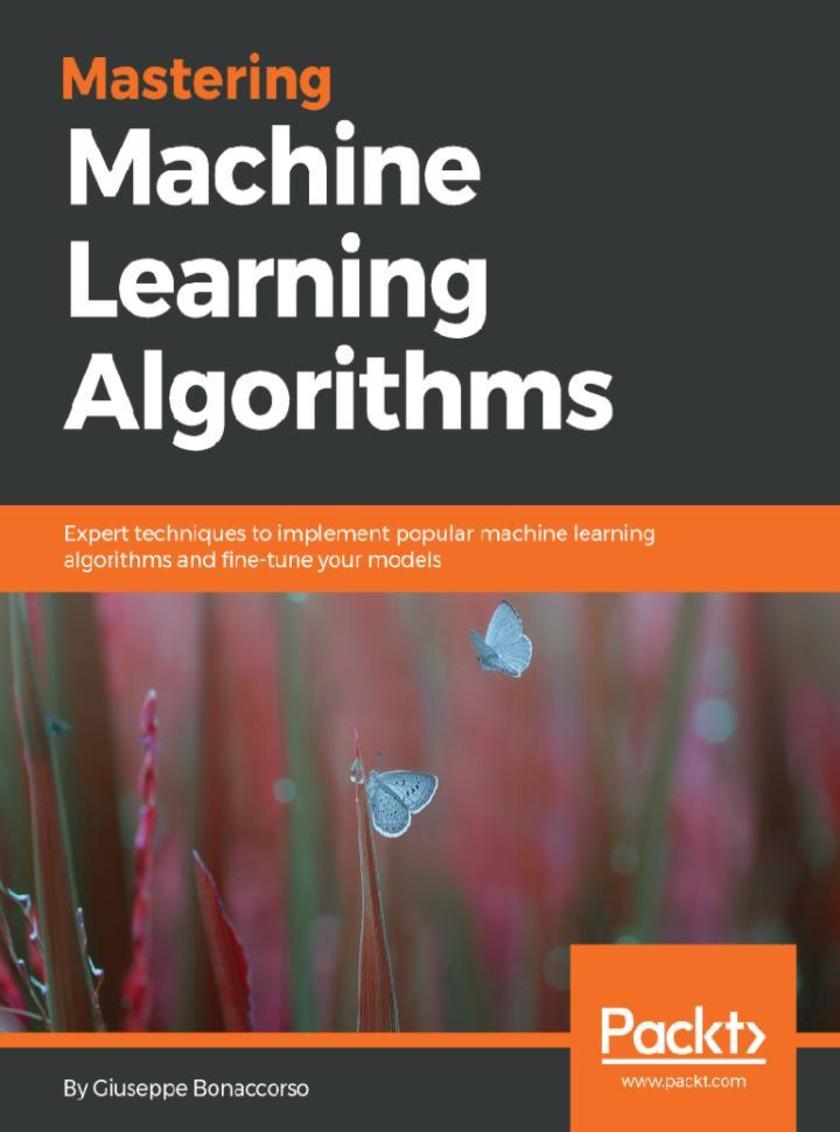
Mastering Machine Learning Algorithms
¥81.74
Explore and master the most important algorithms for solving complex machine learning problems. About This Book ? Discover high-performing machine learning algorithms and understand how they work in depth. ? One-stop solution to mastering supervised, unsupervised, and semi-supervised machine learning algorithms and their implementation. ? Master concepts related to algorithm tuning, parameter optimization, and more Who This Book Is For This book is an ideal and relevant source of content for data science professionals who want to delve into complex machine learning algorithms, calibrate models, and improve the predictions of the trained model. A basic knowledge of machine learning is preferred to get the best out of this guide. What You Will Learn ? Explore how a ML model can be trained, optimized, and evaluated ? Understand how to create and learn static and dynamic probabilistic models ? Successfully cluster high-dimensional data and evaluate model accuracy ? Discover how artificial neural networks work and how to train, optimize, and validate them ? Work with Autoencoders and Generative Adversarial Networks ? Apply label spreading and propagation to large datasets ? Explore the most important Reinforcement Learning techniques In Detail Machine learning is a subset of AI that aims to make modern-day computer systems smarter and more intelligent. The real power of machine learning resides in its algorithms, which make even the most difficult things capable of being handled by machines. However, with the advancement in the technology and requirements of data, machines will have to be smarter than they are today to meet the overwhelming data needs; mastering these algorithms and using them optimally is the need of the hour. Mastering Machine Learning Algorithms is your complete guide to quickly getting to grips with popular machine learning algorithms. You will be introduced to the most widely used algorithms in supervised, unsupervised, and semi-supervised machine learning, and will learn how to use them in the best possible manner. Ranging from Bayesian models to the MCMC algorithm to Hidden Markov models, this book will teach you how to extract features from your dataset and perform dimensionality reduction by making use of Python-based libraries such as scikit-learn. You will also learn how to use Keras and TensorFlow to train effective neural networks. If you are looking for a single resource to study, implement, and solve end-to-end machine learning problems and use-cases, this is the book you need. Style and approach A hands-on guide filled with real-world examples of popular algorithms used for data science and machine learning
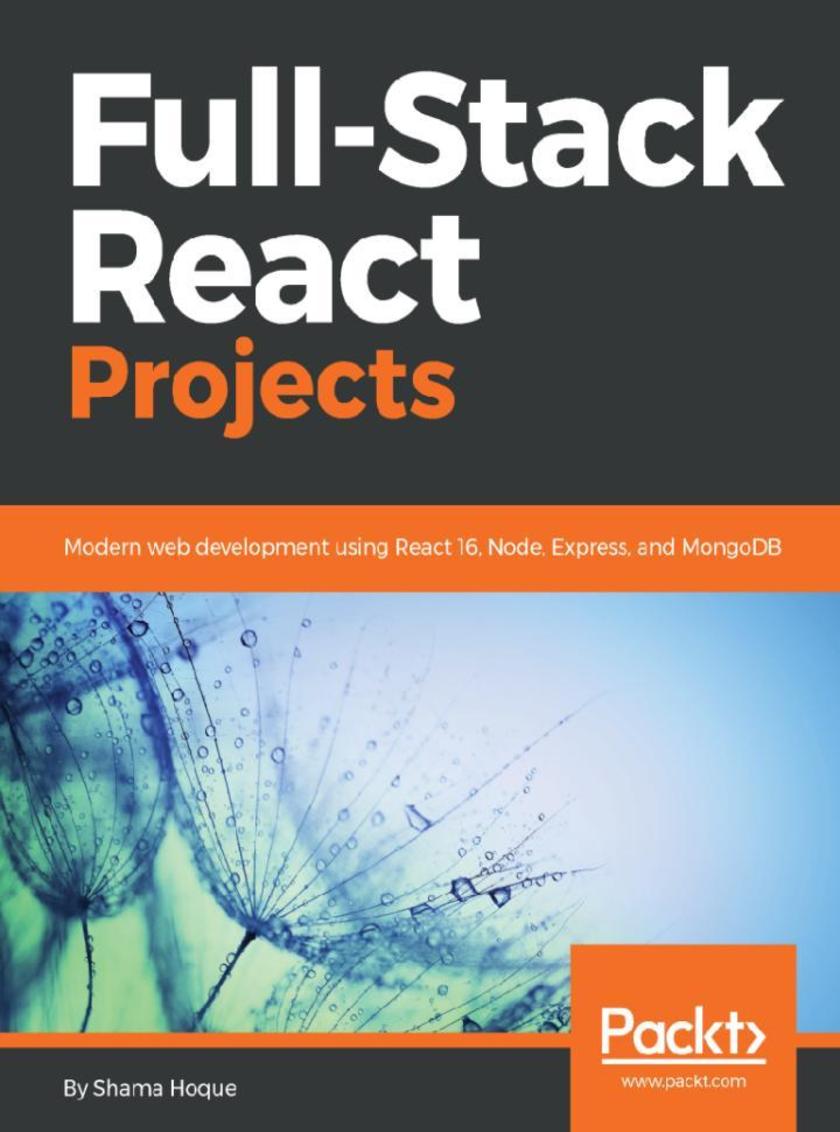
Full-Stack React Projects
¥81.74
Unleash the power of MERN stack by building diverse web applications using React, Node.js, Express, and MongoDB About This Book ? Create dynamic web applications with the MERN stack ? Leverage the power of React in building interactive and complex user interfaces ? Unlock the potential of Node, Express, and MongoDB to build modern full-stack applications Who This Book Is For Full-Stack React Web Development Projects is for JavaScript developers who have some experience with React, but no previous experience with full-stack development involving Node, Express, and MongoDB, and who want practical guidelines to start building different types of real-world web applications with this stack. What You Will Learn ? Set up your development environment and develop a MERN application ? Implement user authentication and authorization using JSON Web Tokens ? Build a social media application by extending the basic MERN application ? Create an online marketplace application with shopping cart and Stripe payments ? Develop a media streaming application using MongoDB GridFS ? Implement server-side rendering with data to improve SEO ? Set up and use React 360 to develop user interfaces with VR capabilities ? Learn industry best practices to make MERN stack applications reliable and scalable In Detail The benefits of using a full JavaScript stack for web development are undeniable, especially when robust and widely adopted technologies such as React, Node, and Express and are available. Combining the power of React with industry-tested, server-side technologies, such as Node, Express, and MongoDB, creates a diverse array of possibilities when developing real-world web applications. This book guides you through preparing the development environment for MERN stack-based web development, to creating a basic skeleton application and extending it to build four different web applications. These applications include a social media, an online marketplace, a media streaming, and a web-based game application with virtual reality features. While learning to set up the stack and developing a diverse range of applications with this book, you will grasp the inner workings of the MERN stack, extend its capabilities for complex features, and gain actionable knowledge of how to prepare MERN-based applications to meet the growing demands of real-world web applications. Style and approach This book provides practical guidelines on setting up and building MERN stack based applications, while providing further explanations on key concepts and implementations.
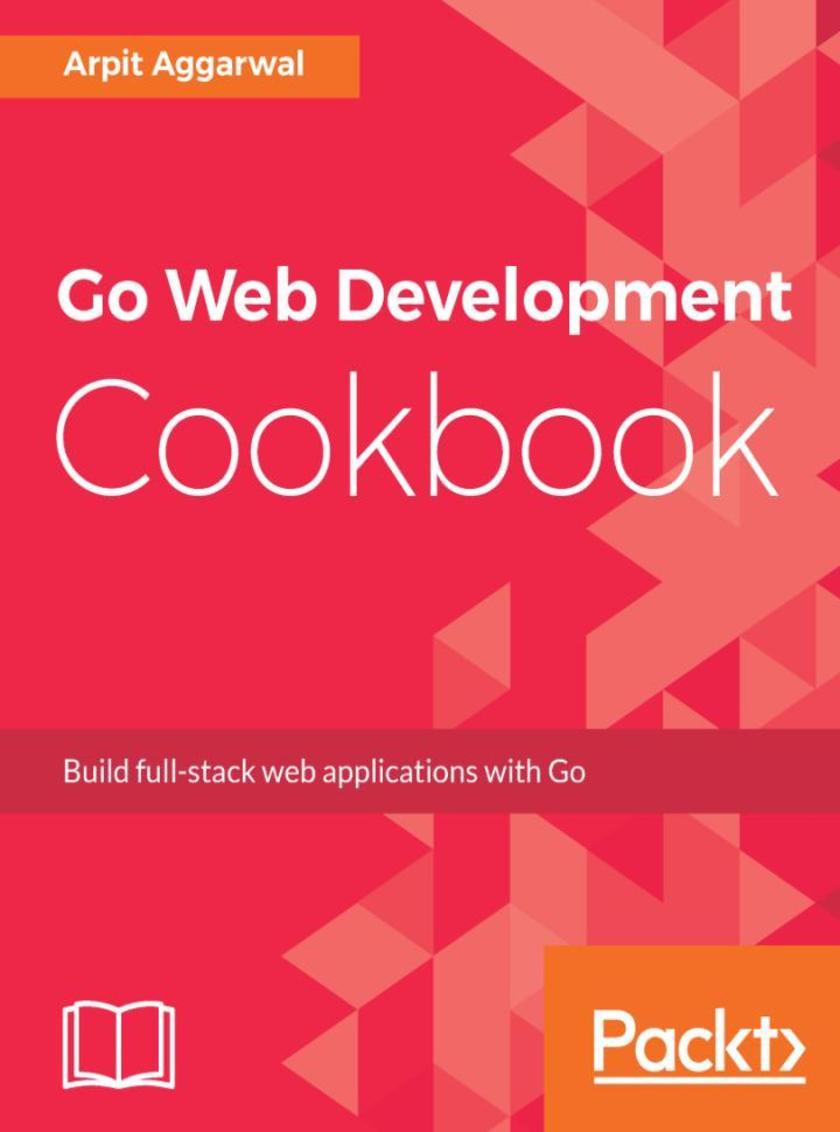
Go Web Development Cookbook
¥81.74
86 recipes on how to build fast, scalable, and powerful web services and applications with Go About This Book ? Become proficient in RESTful web services ? Build scalable, high-performant web applications in Go ? Get acquainted with Go frameworks for web development Who This Book Is For This book is for Go developers interested in learning how to use Go to build powerful web applications. A background in web development is expected. What You Will Learn ? Create a simple HTTP and TCP web server and understand how it works ? Explore record in a MySQL and MongoDB database ? Write and consume RESTful web service in Go ? Invent microservices in Go using Micro – a microservice toolkit ? Create and Deploy the Beego application with Nginx ? Deploy Go web application and Docker containers on an AWS EC2 instance In Detail Go is an open source programming language that is designed to scale and support concurrency at the language level. This gives you the liberty to write large concurrent web applications with ease. From creating web application to deploying them on Amazon Cloud Services, this book will be your one-stop guide to learn web development in Go. The Go Web Development Cookbook teaches you how to create REST services, write microservices, and deploy Go Docker containers. Whether you are new to programming or a professional developer, this book will help get you up to speed with web development in Go. We will focus on writing modular code in Go; in-depth informative examples build the base, one step at a time. You will learn how to create a server, work with static files, SQL, NoSQL databases, and Beego. You will also learn how to create and secure REST services, and create and deploy Go web application and Go Docker containers on Amazon Cloud Services. By the end of the book, you will be able to apply the skills you've gained in Go to create and explore web applications in any domain. Style and approach This book helps you learn core Go concepts faster by taking a recipe-based approach.
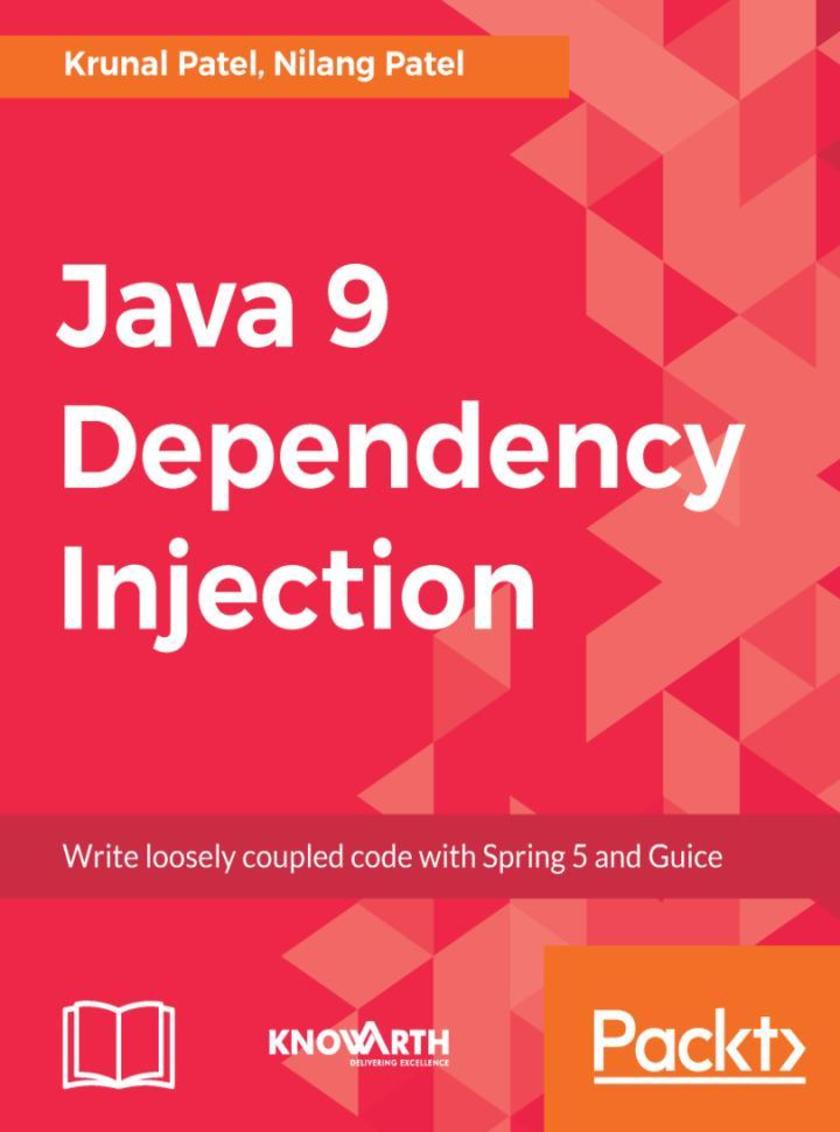
Java 9 Dependency Injection
¥81.74
Create clean code with Dependency Injection principles About This Book ? Use DI to make your code loosely coupled to manage and test your applications easily on Spring 5 and Google Guice ? Learn the best practices and methodologies to implement DI ? Write more maintainable Java code by decoupling your objects from their implementations Who This Book Is For This book is for Java developers who would like to implement DI in their application. Prior knowledge of the Spring and Guice frameworks and Java programming is assumed. What You Will Learn ? Understand the benefits of DI and fo from a tightly coupled design to a cleaner design organized around dependencies ? See Java 9’s new features and modular framework ? Set up Guice and Spring in an application so that it can be used for DI ? Write integration tests for DI applications ? Use scopes to handle complex application scenarios ? Integrate any third-party library in your DI-enabled application ? Implement Aspect-Oriented Programming to handle common cross-cutting concerns such as logging, authentication, and transactions ? Understand IoC patterns and anti-patterns in DI In Detail Dependency Injection (DI) is a design pattern that allows us to remove the hard-coded dependencies and make our application loosely coupled, extendable, and maintainable. We can implement DI to move the dependency resolution from compile-time to runtime. This book will be your one stop guide to write loosely coupled code using the latest features of Java 9 with frameworks such as Spring 5 and Google Guice. We begin by explaining what DI is and teaching you about IoC containers. Then you’ll learn about object compositions and their role in DI. You’ll find out how to build a modular application and learn how to use DI to focus your efforts on the business logic unique to your application and let the framework handle the infrastructure work to put it all together. Moving on, you’ll gain knowledge of Java 9’s new features and modular framework and how DI works in Java 9. Next, we’ll explore Spring and Guice, the popular frameworks for DI. You’ll see how to define injection keys and configure them at the framework-specific level. After that, you’ll find out about the different types of scopes available in both popular frameworks. You’ll see how to manage dependency of cross-cutting concerns while writing applications through aspect-oriented programming. Towards the end, you’ll learn to integrate any third-party library in your DI-enabled application and explore common pitfalls and recommendations to build a solid application with the help of best practices, patterns, and anti-patterns in DI. Style and approach This book will take an easy-to-understand, step-by-step approach providing hands-on examples at every stage.
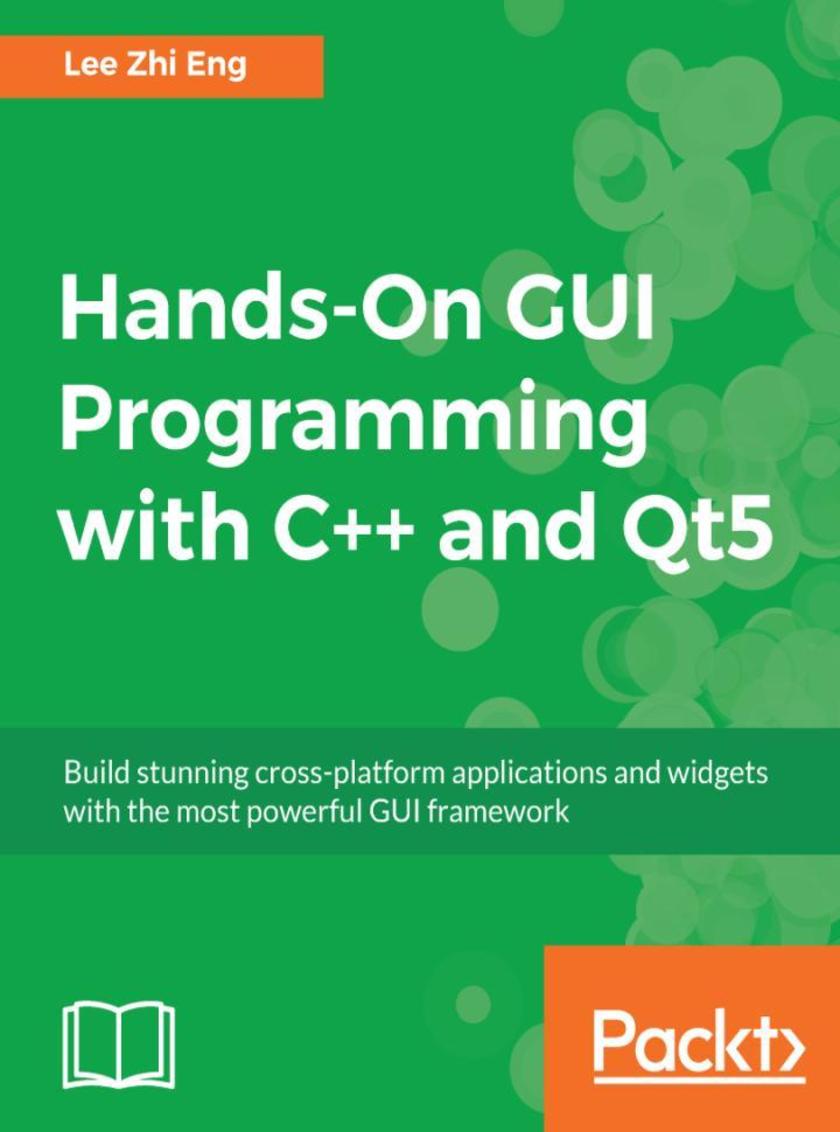
Hands-On GUI Programming with C++ and Qt5
¥81.74
Create visually appealing and feature-rich applications by using Qt 5 and the C++ language About This Book ? Explore Qt 5’s powerful features to easily design your GUI application ? Leverage Qt 5 to build attractive cross-platform applications ? Work with Qt modules for multimedia, networking, and location, to customize your Qt applications Who This Book Is For This book will appeal to developers and programmers who would like to build GUI-based applications. Basic knowledge of C++ is necessary and the basics of Qt would be helpful. What You Will Learn ? Implement tools provided by Qt 5 to design a beautiful GUI ? Understand different types of graphs and charts supported by Qt 5 ? Create a web browser using the Qt 5 WebEngine module and web view widget ? Connect to the MySQL database and display data obtained from it onto the Qt 5 GUI ? Incorporate the Qt 5 multimedia and networking module in your application ? Develop Google Map-like applications using Qt 5’s location module ? Discover cross-platform development by exporting the Qt 5 application to different platforms ? Uncover the secrets behind debugging Qt 5 and C++ applications In Detail Qt 5, the latest version of Qt, enables you to develop applications with complex user interfaces for multiple targets. It provides you with faster and smarter ways to create modern UIs and applications for multiple platforms. This book will teach you to design and build graphical user interfaces that are functional, appealing, and user-friendly. In the initial part of the book, you will learn what Qt 5 is and what you can do with it. You will explore the Qt Designer, discover the different types of widgets generally used in Qt 5, and then connect your application to the database to perform dynamic operations. Next, you will be introduced to Qt 5 chart which allows you to easily render different types of graphs and charts and incorporate List View Widgets in your application. You will also work with various Qt modules, like QtLocation, QtWebEngine, and the networking module through the course of the book. Finally, we will focus on cross-platform development with QT 5 that enables you to code once and run it everywhere, including mobile platforms. By the end of this book, you will have successfully learned about high-end GUI applications and will be capable of building many more powerful, cross-platform applications. Style and approach This is a comprehensive guide that explores the essential Qt features and implement them in building real-world cross-platform GUI applications
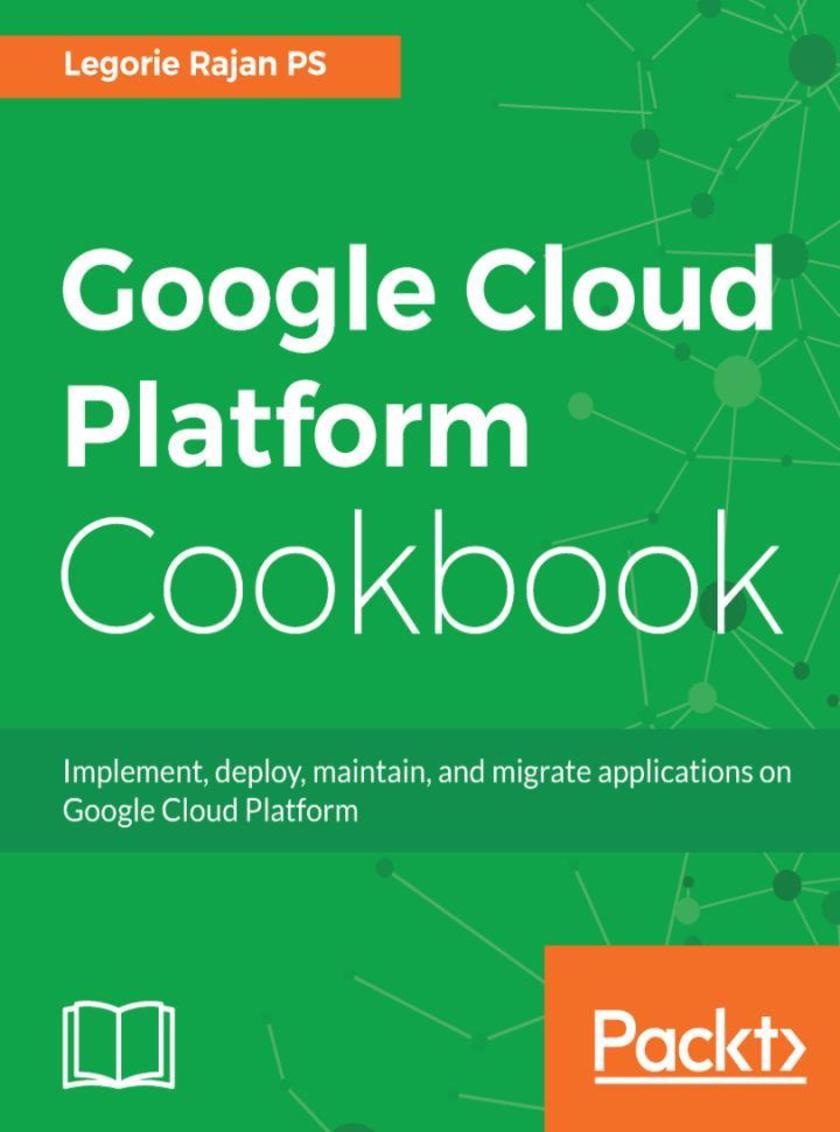
Google Cloud Platform Cookbook
¥81.74
Practical recipes to implement cost-effective and scalable cloud solutions for your organization About This Book ? Implement Google Cloud services in your organization ? Leverage Google Cloud components to secure your organization’s data ? A recipe-based guide that promises hands-on experience in deploying a highly scalable and available environment Who This Book Is For This book is for IT professionals, engineers, and developers looking at implementing Google Cloud in their organizations. Administrators and architects planning to make their organization more efficient with Google Cloud will also find this book useful. Basic understanding of Cloud services and the Google Cloud platform is necessary. What You Will Learn ? Host a Python application on Google Compute Engine ? Host an application using Google Cloud Functions ? Migrate a MySQL DB to Cloud Spanner ? Configure a network for a highly available application on GCP ? Learn simple image processing using Storage and Cloud Functions ? Automate security checks using Policy Scanner ? Understand tools for monitoring a production environment in GCP ? Learn to manage multiple projects using service accounts In Detail Google Cloud Platform is a cloud computing platform that offers products and services to host applications using state-of-the art infrastructure and technology. You can build and host applications and websites, store data, and analyze data on Google's scalable infrastructure. This book follows a recipe-based approach, giving you hands-on experience to make the most of Google Cloud services. This book starts with practical recipes that explain how to utilize Google Cloud's common services. Then, you'll see how to make full use of Google Cloud components such as networking, security, management, and developer tools. Next, we'll deep dive into implementing core Google Cloud services into your organization, with practical recipes on App Engine, Compute Engine microservices with Cloud Functions, virtual networks, and Cloud Storage. Later, we'll provide recipes on implementing authentication and security, Cloud APIs, command-line management, deployment management, and the Cloud SDK. Finally, we'll cover administration troubleshooting tasks with the Compute and Container Engines and we'll show how to monitor your organization's efficiency with best practices. By the end of this book, you'll have a complete understanding of how to implement Google Cloud services in your organization with ease. Style and approach This book will quickly get you started with using Google Cloud Services.
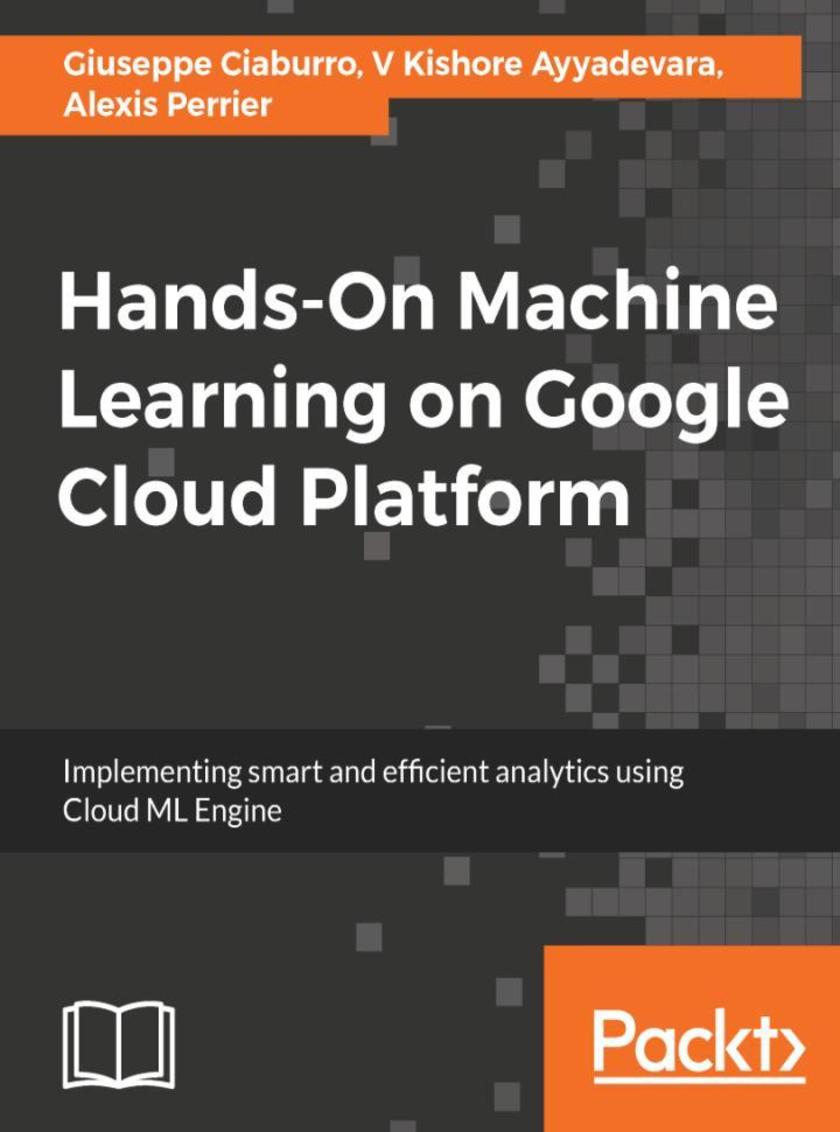
Hands-On Machine Learning on Google Cloud Platform
¥81.74
Unleash Google's Cloud Platform to build, train and optimize machine learning models About This Book ? Get well versed in GCP pre-existing services to build your own smart models ? A comprehensive guide covering aspects from data processing, analyzing to building and training ML models ? A practical approach to produce your trained ML models and port them to your mobile for easy access Who This Book Is For This book is for data scientists, machine learning developers and AI developers who want to learn Google Cloud Platform services to build machine learning applications. Since the interaction with the Google ML platform is mostly done via the command line, the reader is supposed to have some familiarity with the bash shell and Python scripting. Some understanding of machine learning and data science concepts will be handy What You Will Learn ? Use Google Cloud Platform to build data-based applications for dashboards, web, and mobile ? Create, train and optimize deep learning models for various data science problems on big data ? Learn how to leverage BigQuery to explore big datasets ? Use Google’s pre-trained TensorFlow models for NLP, image, video and much more ? Create models and architectures for Time series, Reinforcement Learning, and generative models ? Create, evaluate, and optimize TensorFlow and Keras models for a wide range of applications In Detail Google Cloud Machine Learning Engine combines the services of Google Cloud Platform with the power and flexibility of TensorFlow. With this book, you will not only learn to build and train different complexities of machine learning models at scale but also host them in the cloud to make predictions. This book is focused on making the most of the Google Machine Learning Platform for large datasets and complex problems. You will learn from scratch how to create powerful machine learning based applications for a wide variety of problems by leveraging different data services from the Google Cloud Platform. Applications include NLP, Speech to text, Reinforcement learning, Time series, recommender systems, image classification, video content inference and many other. We will implement a wide variety of deep learning use cases and also make extensive use of data related services comprising the Google Cloud Platform ecosystem such as Firebase, Storage APIs, Datalab and so forth. This will enable you to integrate Machine Learning and data processing features into your web and mobile applications. By the end of this book, you will know the main difficulties that you may encounter and get appropriate strategies to overcome these difficulties and build efficient systems. Style and approach An easy-to-follow step by step guide which will help you get to the grips with real-world applications of Google Cloud Machine Learning.
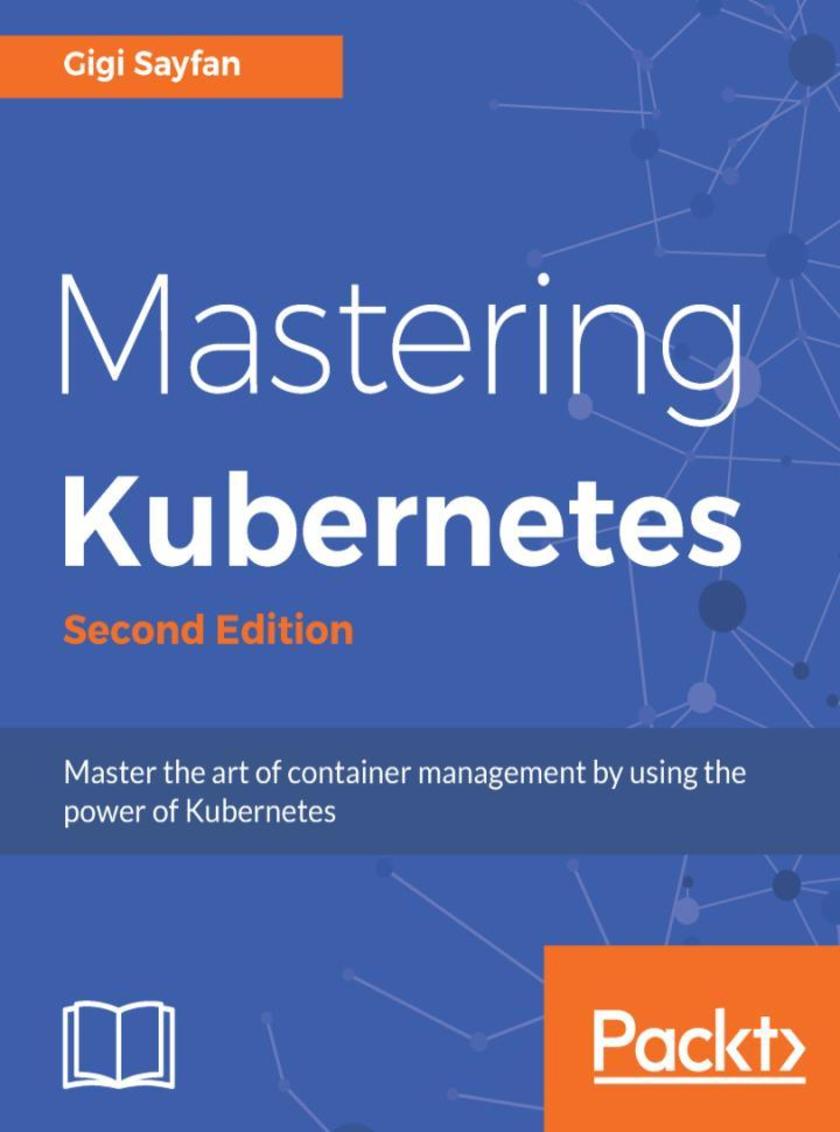
Mastering Kubernetes
¥81.74
Exploit design, deployment, and management of large-scale containers About This Book ? Explore the latest features available in Kubernetes 1.10 ? Ensure that your clusters are always available, scalable, and up to date ? Master the skills of designing and deploying large clusters on various cloud platforms Who This Book Is For Mastering Kubernetes is for you if you are a system administrator or a developer who has an intermediate understanding of Kubernetes and wish to master its advanced features. Basic knowledge of networking would also be helpful. In all, this advanced-level book provides a smooth pathway to mastering Kubernetes. What You Will Learn ? Architect a robust Kubernetes cluster for long-time operation ? Discover the advantages of running Kubernetes on GCE, AWS, Azure, and bare metal ? Understand the identity model of Kubernetes, along with the options for cluster federation ? Monitor and troubleshoot Kubernetes clusters and run a highly available Kubernetes ? Create and configure custom Kubernetes resources and use third-party resources in your automation workflows ? Enjoy the art of running complex stateful applications in your container environment ? Deliver applications as standard packages In Detail Kubernetes is an open source system that is used to automate the deployment, scaling, and management of containerized applications. If you are running more containers or want automated management of your containers, you need Kubernetes at your disposal. To put things into perspective, Mastering Kubernetes walks you through the advanced management of Kubernetes clusters. To start with, you will learn the fundamentals of both Kubernetes architecture and Kubernetes design in detail. You will discover how to run complex stateful microservices on Kubernetes including advanced features such as horizontal pod autoscaling, rolling updates, resource quotas, and persistent storage backend. Using real-world use cases, you will explore the options for network configuration, and understand how to set up, operate, and troubleshoot various Kubernetes networking plugins. In addition to this, you will get to grips with custom resource development and utilization in automation and maintenance workflows. To scale up your knowledge of Kubernetes, you will encounter some additional concepts based on the Kubernetes 1.10 release, such as Promethus, Role-based access control, API aggregation, and more. By the end of this book, you’ll know everything you need to graduate from intermediate to advanced level of understanding Kubernetes. Style and approach Delving into the design of the Kubernetes platform, the reader will be exposed to Kubernetes advanced features and best practices. This advanced-level book will provide a pathway to mastering Kubernetes.
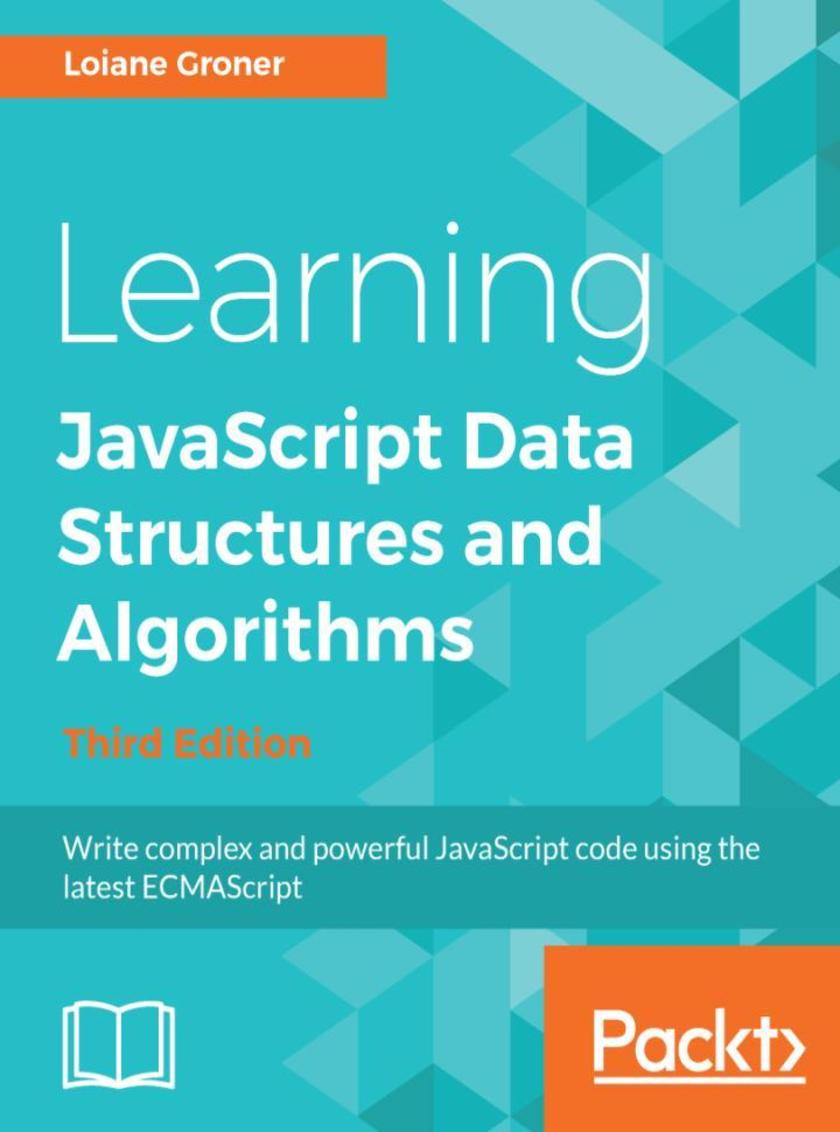
Learning JavaScript Data Structures and Algorithms
¥81.74
Create classic data structures and algorithms such as depth-first search and breadth-first search, learn recursion, as well as create and use a heap data structure using JavaScript About This Book ? Implement common data structures and the associated algorithms along with the context in which they are used ? Master existing JavaScript data structures such as arrays, sets, and maps, and learn how to implement new ones such as stacks, linked lists, trees, and graphs in ES 8 ? Develop abstract data types to make JavaScript a more flexible and powerful programming language Who This Book Is For If you’re a JavaScript developer who wants to dive deep into JavaScript and write complex programs using JavaScript data structures and algorithms, this book is for you. What You Will Learn ? Declare, initialize, add, and remove items from arrays, stacks, and queues ? Create and use linked lists, doubly linked lists, and circular linked lists ? Store unique elements with hash tables, dictionaries, and sets ? Explore the use of binary trees and binary search trees ? Sort data structures using algorithms such as bubble sort, selection sort, insertion sort, merge sort, and quick sort ? Search elements in data structures using sequential sort and binary search In Detail A data structure is a particular way of organizing data in a computer to utilize resources efficiently. Data structures and algorithms are the base of every solution to any programming problem. With this book, you will learn to write complex and powerful code using the latest ES 2017 features. Learning JavaScript Data Structures and Algorithms begins by covering the basics of JavaScript and introduces you to ECMAScript 2017, before gradually moving on to the most important data structures such as arrays, queues, stacks, and linked lists. You will gain in-depth knowledge of how hash tables and set data structures function as well as how trees and hash maps can be used to search files in an HD or represent a database. This book serves as a route to take you deeper into JavaScript. You’ll also get a greater understanding of why and how graphs, one of the most complex data structures, are largely used in GPS navigation systems in social networks. Toward the end of the book, you’ll discover how all the theories presented in this book can be applied to solve real-world problems while working on your own computer networks and Facebook searches. Style and approach Easy to follow guide which will cover the most used data structures and sorting/searching algorithms known in the computer science world along with examples to help the readers understand each chapter thoroughly.
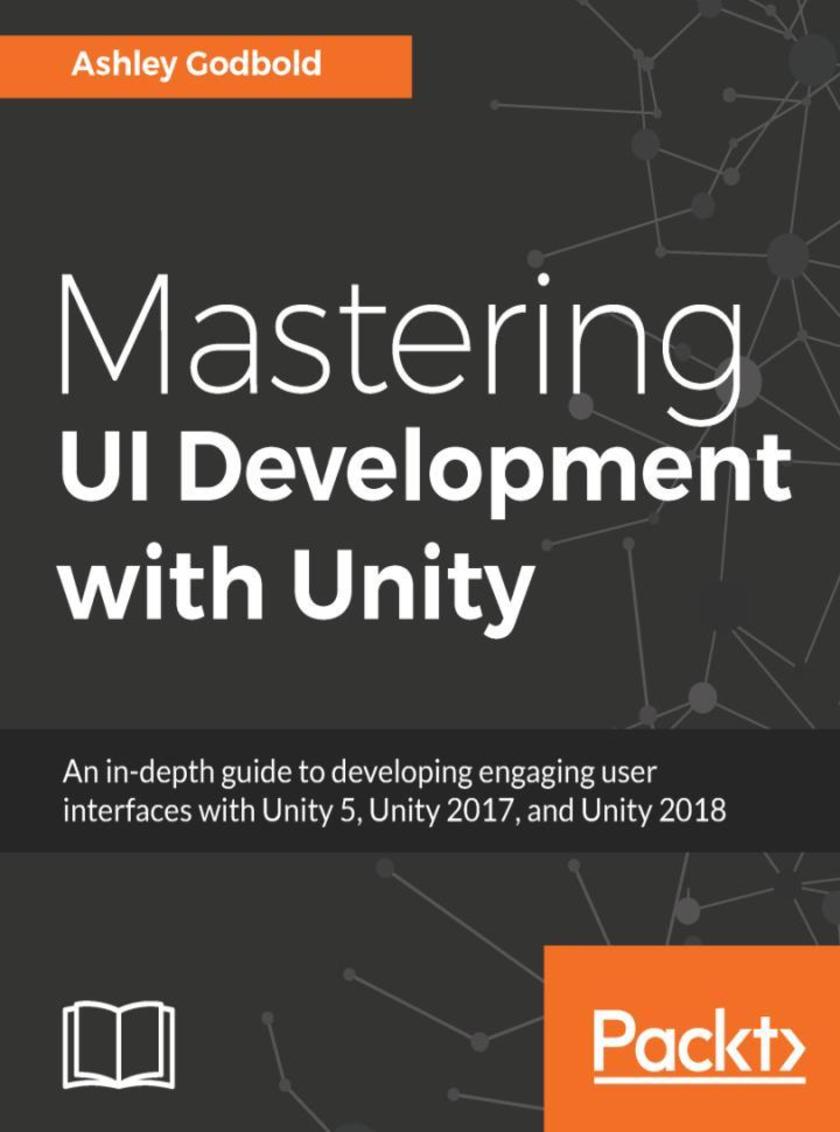
Mastering UI Development with Unity
¥81.74
Master Game UI system by creating captivating user interface components with Unity 5 through Unity 2018 and C#. Learn about UI texts, images, world space UI, mobile-specific UI and much more. About This Book ? Develop a game UI with both technical and aesthetic considerations ? Use all the UI elements provided by Unity's UI system ? Step-by-step examples of creating user interface components in the top game genres Who This Book Is For This book is for anyone keen to improve their games via a great user interface with Unity's UI system. If you're looking for a book that explains how to develop specific user interfaces or that thoroughly explains how each of the individual Unity components work, this book is for you. What You Will Learn ? Design principles and patterns for laying out elements in your UI ? Techniques that allow your UI to scale appropriately in different resolutions ? How to use automatic layouts to streamline your UI building process ? Properties of the Event System and how to appropriately hook events to your UI elements ? Access the components and properties of UI elements via code ? Implement all of Unity's built-in UI elements as well as those provided by TextMeshPro ? Develop key UI components that are popularly used in multiple game genres ? Add visual flare to user interfaces with the use of animation and particle effects ? Create a UI that displays in the Screen Space as well as World Space In Detail A functional UI is an important component for player interaction in every type of video game. Along with imparting crucial statistical information to the player, the UI is also the window through which the player engages with the world established by the game. Unity's tools give you the opportunity to create complex and attractive UIs to make your game stand out. This book helps you realize the full potential of Unity's powerful tools to create the best UI for your games by walking you through the creation of myriad user interface components. Learn how to create visually engaging heads-up-displays, pause menus, health bars, circular progress bars, animated menus, and more. This book not only teaches how to lay out visual elements, but also how to program these features and implement them across multiple games of varying genres. While working through the examples provided, you will learn how to develop a UI that scales to multiple screen resolutions, so your game can be released on multiple platforms with minimal changes. Style and approach The book walks you through the process of creating many different user interface components, by describing each UI component and property thoroughly and then providing step-by-step examples of its implementation. You will not only learn how to lay out visual elements, but you will also learn how to program for these features and hook them in to your game. The examples provided in the book can be reused for many other products.
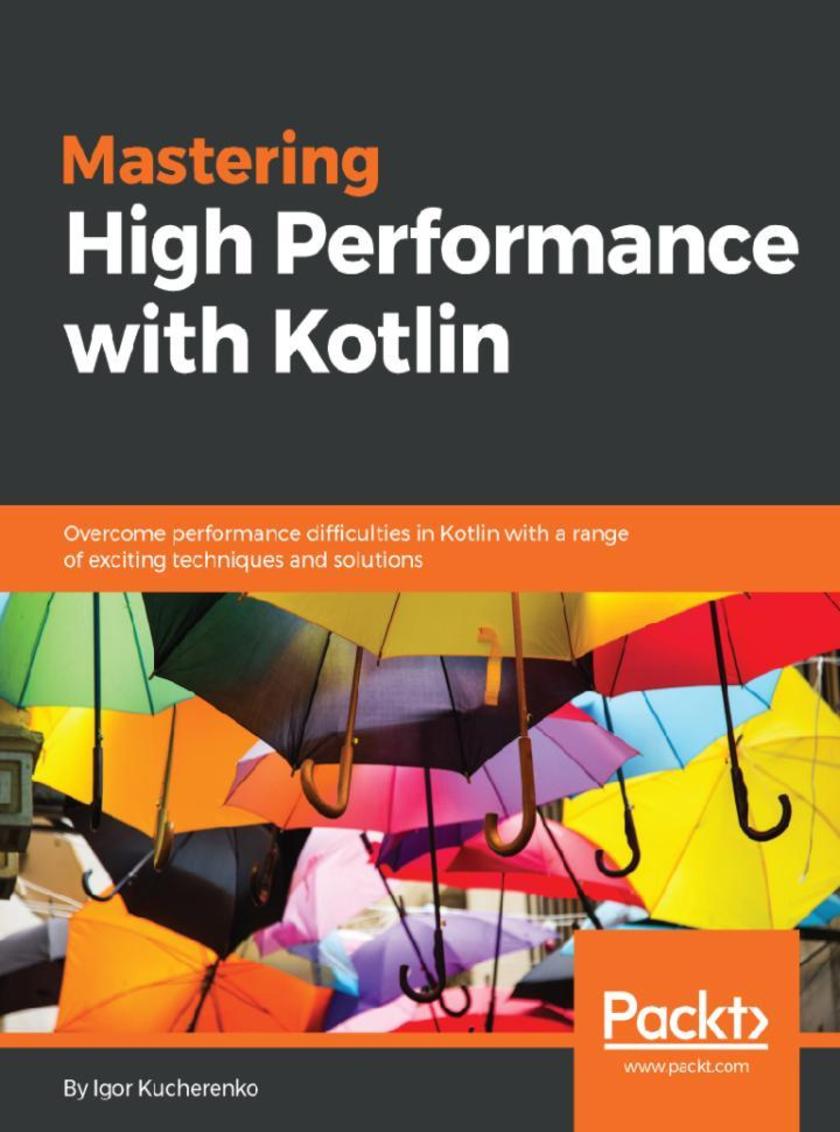
Mastering High Performance with Kotlin
¥81.74
Find out how to write Kotlin code without overhead and how to use different profiling tools and bytecode viewer to inspect expressions of Kotlin language. About This Book ? Apply modern Kotlin features to speed up processing and implement highly efficient and reliable codes. ? Learn memory optimization, concurrency, multi-threading, scaling, and caching techniques to achieve high performance. ? Learn how to prevent unnecessary overhead and use profiling tools to detect performance issues. Who This Book Is For This book is for Kotlin developers who would like to build reliable and high-performance applications. Prior Kotlin programming knowledge is assumed. What You Will Learn ? Understand the importance of high performance ? Learn performance metrics ? Learn popular design patterns currently being used in Kotlin ? Understand how to apply modern Kotlin features to data processing ? Learn how to use profling tools ? Discover how to read bytecode ? Learn to perform memory optimizations ? Uncover approaches to the multithreading environment In Detail The ease with which we write applications has been increasing, but with it comes the need to address their performance. A balancing act between easily implementing complex applications and keeping their performance optimal is a present-day requirement In this book, we explore how to achieve this crucial balance, while developing and deploying applications with Kotlin. The book starts by analyzing various Kotlin specifcations to identify those that have a potentially adverse effect on performance. Then, we move on to monitor techniques that enable us to identify performance bottlenecks and optimize performance metrics. Next, we look at techniques that help to us achieve high performance: memory optimization, concurrency, multi threading, scaling, and caching. We also look at fault tolerance solutions and the importance of logging. We'll also cover best practices of Kotlin programming that will help you to improve the quality of your code base. By the end of the book, you will have gained some insight into various techniques and solutions that will help to create high-performance applications in the Kotlin environment Style and approach This book guides you through how to use profiling tools to detect performance issues and build high-performance applications in the Kotlin environment.
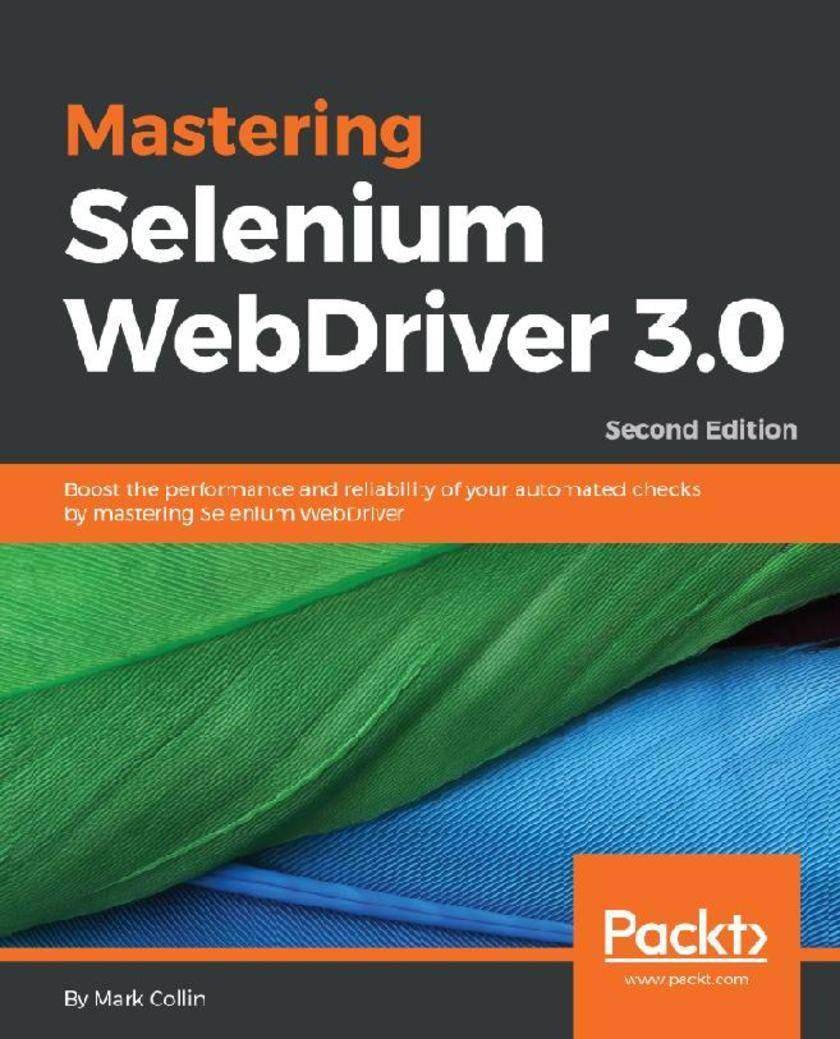
Mastering Selenium WebDriver 3.0
¥81.74
Complement Selenium with useful additions that fit seamlessly into the rich and well-crafted API that Selenium offers About This Book ? Understand the power, simplicity, and limitations of the core Selenium framework ? Write clear, readable, and reliable tests that perform complex test automation tasks ? Work with ChromeDriver and GeckoDriver in headless mode Who This Book Is For If you are a software tester or a developer with working experience in Selenium and competency with Java, who is interested in automation and are looking forward to taking the next step in their learning journey, then this is the book for you. What You Will Learn ? Provide fast, useful feedback with screenshots ? Create extensible, well-composed page objects ? Utilize ChromeDriver and GeckoDriver in headless mode ? Leverage the full power of Advanced User Interactions APIs ? Use JavascriptExecutor to execute JavaScript snippets in the browser through Selenium ? Build user interaction into your test script using JavascriptExecutor ? Learn the basics of working with Appium In Detail The second edition of Mastering Selenium 3.0 WebDriver starts by showing you how to build your own Selenium framework with Maven. You'll then look at how you can solve the difficult problems that you will undoubtedly come across as you start using Selenium in an enterprise environment and learn how to produce the right feedback when failing. Next, you’ll explore common exceptions that you will come across as you use Selenium, the root causes of these exceptions, and how to fix them. Along the way, you’ll use Advanced User Interactions APIs, running any JavaScript you need through Selenium; and learn how to quickly spin up a Selenium Grid using Docker containers. In the concluding chapters, you‘ll work through a series of scenarios that demonstrate how to extend Selenium to work with external libraries and applications so that you can be sure you are using the right tool for the job. Style and approach This book is a pragmatic guide that takes you through the process of creating a test framework with Selenium 3. It then shows you how you can extend this framework to overcome common obstacles that you will come across whilst using Selenium.
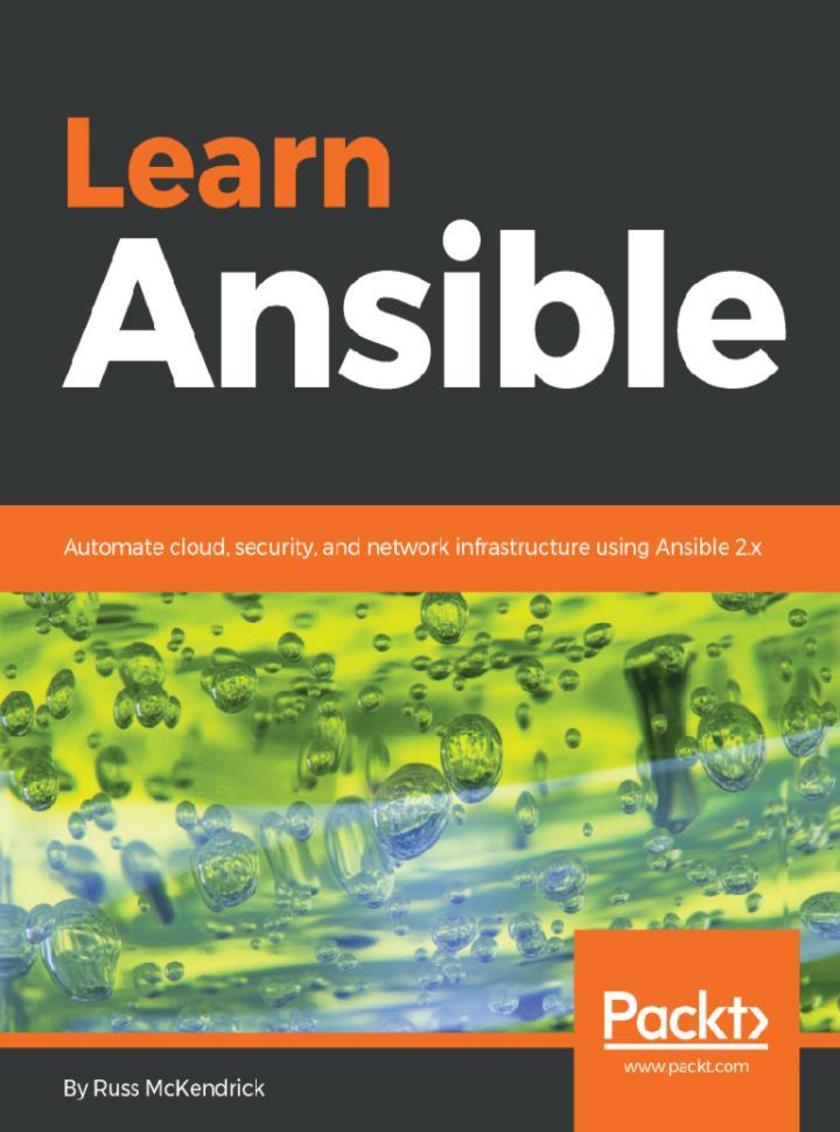
Learn Ansible
¥81.74
Run Ansible playbooks to launch complex multi-tier applications hosted in public clouds About This Book ? Build your learning curve using Ansible ? Automate cloud, network, and security infrastructures with ease ? Gain hands-on exposure on Ansible Who This Book Is For Learn Ansible is perfect for system administrators and developers who want to take their current workflows and transform them into repeatable playbooks using Ansible. No prior knowledge of Ansible is required. What You Will Learn ? Write your own playbooks to configure servers running CentOS, Ubuntu, and Windows ? Identify repeatable tasks and write playbooks to automate them ? Define a highly available public cloud infrastructure in code, making it easy to distribute your infrastructure configuration ? Deploy and configure Ansible Tower and Ansible AWX ? Learn to use community contributed roles ? Use Ansible in your day-to-day role and projects In Detail Ansible has grown from a small, open source orchestration tool to a full-blown orchestration and configuration management tool owned by Red Hat. Its powerful core modules cover a wide range of infrastructures, including on-premises systems and public clouds, operating systems, devices, and services—meaning it can be used to manage pretty much your entire end-to-end environment. Trends and surveys say that Ansible is the first choice of tool among system administrators as it is so easy to use. This end-to-end, practical guide will take you on a learning curve from beginner to pro. You'll start by installing and configuring the Ansible to perform various automation tasks. Then, we'll dive deep into the various facets of infrastructure, such as cloud, compute and network infrastructure along with security. By the end of this book, you'll have an end-to-end understanding of Ansible and how you can apply it to your own environments. Style and approach A hands-on approach to give you practical experience of writing playbooks and roles and executing them. At the end of each chapter, you’ll find test questions to test your knowledge on Ansible.




 购物车
购物车 个人中心
个人中心



